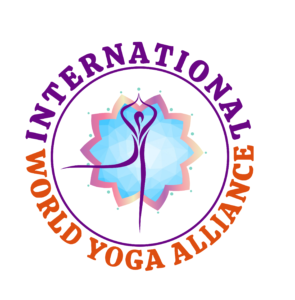200 HOUR YOGA TTC STANDARDS AND REGISTRATION
| 200 HR YOGA TEACHER TRAINING | : | DURATION – 8 WEEKS (Non Residential), 3 WEEKS (Residential) |
| STYLE: TRADITIONAL HATHA YOGA – VINYASA FLOW(Dual Style) | : | PARTICIPANTS (Approx.) : 5 to 100 |
- Basic training Course for All the Aspiring professional Yoga teachers.
- No Prerequisite Qualification is required to enrol in this course.
- Completion of this course enables you to teach yoga in different settings and in different countries.
Our 200 hour teacher training course, is a basic training program for the aspiring teachers looking for their first level certification, or have done other certifications and looking to build upon their existing foundations or just looking to deepen their knowledge and practice. We invite you to join us for an expansive, intensive and nourishing Teacher Training Course. In this course you will know the history of Yoga, its philosophy, Human Physiology, Anatomy, teaching methodology, adjustments and others nuances of teaching and your own practice. Welcome to join the course, with this certification you can register with International World Yoga Alliance™ as (Registered Yoga Teacher) RYT- 200.
COURSE COMPOSITION & FRAME WORK
The following are the standards and Course Framework set by International World Yoga Alliance™ under 5 Educational categories
- 110-Hours of Techniques Training/Practice – Includes Asanas, Pranayamas, Kriyas, chanting, mantras, meditation and other traditional yoga techniques. These hours are a mix between (1) analytical training in how to teach and practice the techniques, and (2) guided practice of the techniques themselves;
- 25-Hours of Teaching Methodology – Includes principles of demonstration, observation, assisting/correcting, instruction, teaching styles, qualities of a teacher, the student’s process of learning, and business aspects of teaching yoga.
- 20-Hours of Anatomy & Physiology – Includes both human physical anatomy and physiology (bodily systems, organs, etc.) and energy anatomy and physiology (chakras, Nadis, etc.). Includes both the study of the subject and application of its principles to yoga practice (benefits, contraindications, healthy movement patterns, etc).
- 30-Hours of Yoga Philosophy/Lifestyle and Ethics for Yoga Teachers – Includes the study of yoga philosophies, yoga lifestyle, and ethics for yoga teachers.
- 15-Hours of Practicum – Includes practice teaching, receiving feedback, observing others teaching and hearing/giving feedback. Also includes assisting students while others are teaching.
Our 200 hr Yoga TTC comprehensively meets the Standards defined by the International World Yoga Alliance, and exceeds in all respects as we enhance the program with other activities like, MANTRA YOGA – the science of sound Vibrations and its role in spiritual practices. BUDDHI YOGA – Yogic Cognitive Therapy. YOGIC PERSONALITY THEORY- (“Panchakosha” Model) – comparative study of Yogic Psychology and modern Psychology etc.
A TYPICAL DAILY SCHEDULE Will Be Like….
| 6:30 –7:45 am | Mantra Chanting, Pranayama & Guided Meditations |
| 8:00 – 10:00 am | Asana Practice. |
| 10:00 – 11:00 am | Breakfast |
| 11:00 – 1:00 pm | Philosophy/ anatomy class. |
| 1:00 – 3:00 pm | Lunch Break. |
| 3:00 – 5:00 pm | Alignment/Teaching Methodology/Adjustments Training. |
| 5:00 – 6:00 pm | Asana Practice |
| 6:00 – 7:00 pm | Methodology/student teaching |
8.00 – 9:00 pm(Tues & Thur) 2 days only | Sat-Sangams – Q & A on philosophy/spirituality/meditation related topics. No classes after 11 Am on Sunday. |
Overview Of The Structure and Operational Details of Our 200 Hour TTC Program
Our 200 hr Yoga TTC comprehensively meets the Standards defined by the International World Yoga Alliance, and exceeds in all respects as we enhance the program with other activities like, MANTRA YOGA/Chanting – the science of sound Vibrations and its role in spiritual practices. BUDDHI(BRAIN) YOGA – Yogic Cognitive Therapy. YOGIC PERSONALITY THEORY- (“Panchakosha” Model) – comparative study of Yogic Psychology and modern Psychology etc.
Techniques Training & Practice: 100 Hours
ASANA PRACTICE: 100 Hours
The Core styles of Asana Taught in the course: Traditional Hatha Yoga & Vinyasa Yoga
Traditional Hatha Yoga – Hatha Yoga is a principle style of Yoga practices and is the origin of all other yoga practiced today. The word Hatha is a combination of two words ‘Ha’ meaning “Sun Energy” and ‘Tha’ meaning “Moon Energy” representing two Principle energies flowing within our body. When these two aspects of one’s self are integrated, a fullness of the whole personality is experienced.
Hatha yoga influences our two sides of the brain and brings balance between these two energies within all of us to merge from the opposite to the harmony of oneness.
Hatha Yoga is a powerful tool of transformation and the practitioner develops a balance of strength and flexibility. The Salient feature of “Hatha yoga” is the focus on the asanas and breath control while holding the postures for longer duration. Hatha yoga classes incorporate the mind, body and spirit through various practices like Asanas, (postures) Pranayama (breathing) and Kriyas, (internal cleansing). It is not fast flowing and is highly suitable for beginners as well as advanced practitioners, as it is much gentler then Ashtanga yoga.
VINYASA YOGA: Vinyasa literally means to be placed in specific way. In this Style all the asanas are connected with each other and based on breath in a manner of unbreakable flow, which meant to bring the mind in calm and pointed state with a help of 4 components: asana, ujjai, bandha, drishti, where all the components practiced together to achieve physical and mental balance. The sequencing of asanas is one of characteristics of vinyasa style. ( Ujjai should be performed in a proper way).
FUNCTIONAL DETAILS OF THE COURSE
Asana Practices: 100 Hours
- Warm up exercises and Sun Salutations with mantras.
- Pavana muktasana series to loosen and strengthen major joints; to develop core energy ,to bring flexibility in body.
- Standing Asanas to develop neuromuscular coordination.
- Fifty five Asanas; from the foundations of Standing, Sitting, Prone and Supine; Covering Forward bends, Back bends, Spine twists, Hip openers & Stretches, Arm balances and Inversions; With the details of breathing patterns while doing and holding an asana, contraindications and benefits.
- Variations of the above mentioned in full details.
Workshops: Special workshops are conducted on Variations and modifications of advanced postures, Modifications for beginners and students with injuries (multi-level modifications) arm balances, twists, inversions, hip openings, headstands, back bendings, personal corrections, personal guidance, safety measurements and others individual tips, if required.
Other components related: how to use props including blocks, bolsters, straps, blankets, walls in your yoga practice and rope headstand etc.
Adjustments/Corrections: Modes of adjustments and effective adjustment techniques are given by expert teachers to reap the full benefits of the practice.
Feed backs: Regular feedbacks are given by our teachers and fellow students about your teaching in order to facilitate you to improve and find your unique voice and style as a teacher.
Teaching methodology: Techniques & Demonstrations: 25 Hours
Principles of demonstration: the art of teaching, leading a class, voice modulation, effective communication with great clarity.
Observing, assisting and correcting: Mindful adjustments, correcting/adjusting though physical and verbal instructions.
Instructions, teaching styles : Designing and planning a class suitable to different needs. Learning Sanskrit names and other symbolism related to Asanas. Structuring and sequencing an asana class, Exploring various methodologies.
Qualities of a teacher: voice, presence, Dealing with injuries and explaining about safety precautions.
Business aspects of teaching yoga: Educating about business ethics and values. setting up yoga business and community responsibilities. Marketing and advertising.
PRANAYAMA (Yogic Breathing)
Pranamaya kosha – pranic body. Its nature and characteristics. Introduction, different aspects and different types of prana, breathing Basics, anatomy of breathing, Yogic breathing, Kapalbhati (frontal brain cleansing breath), Bhastrika (bellows breath), suryabheda (vitality stimulating breath).Nadi Shodhana (alternate nostril breathing), Ujjayi (the psychic or victorious breath), Sheetali (cooling breath), Shitkari (hissing breath), Bhramari (humming bee breath),
MUDRA (Attitude of Energy flow/Psychic Gesture): Sacred gestures and hand positions for Energy flow.
- Mudra Meaning, different types of mudras observed during Yoga practice, chin mudra (psychic gesture of consciousness)/Jnana mudra (psychic gesture of knowledge), Nasikagra mudra (nosetip gazing mudra), Shanmukhi mudra (closing the seven gates), Khechari mudra (tongue lock), Vipareet karani (inverted psychic attitude), Maha mudra (great psychic attitude), Shambhavi mudra (eyebrow center of gazing).
- Theoretical explorations, symbolism, practice and benefits of mudras and their effect of the Pranic body.
KRIYA: Yogic cleansing techniques: Nasal cleansing- Jala neti; Kapala Bhati and Trataka – flame gazing.
DHYAANA YOGA: 15 Hours
MEDITATION PRACTICES: Introduction, definitions, types of meditations, preparatory practices, and obstacles during meditation, methods to overcome them and its benefits. scientific evidence of the benefits of meditation on the physical, pranic and emotional personalities.
GUIDED MEDITATIONS: Relaxation meditation, visualization meditation, Pranic awareness meditations, chakra meditation, silent meditations, mantra meditation, concentration meditation, mindfulness meditation, transcendental meditation, Loving kindness meditation and gratitude meditations.
MANTRA YOGA: (Mantra Chanting): Definition of Mantra, Its significance, its calming and healing effect on the psyche. The role of sound in spiritual practices.
Anatomy & Physiology: 20 Hours
ANATOMY: Comprising Physical Anatomy, Physiology and Energy anatomy:
Physical Anatomy and Physiology: Insight into relevant anatomical systems in our body and their connection with Asana practice. The course focuses on the following topics;
- Insight into different body systems and their function, terminology of human anatomy.
- Skeletal system, muscular system, connective tissue, nervous system, major joints of the body.
- Understanding the anatomical and skeletal differences i.e. compression, tension, and proportion and orientation theory.
- The foot, knee, pelvic floor, hips, spine, shoulder
- Breathing and respiratory system.
ANATOMY: Energy Anatomy includes Energy Body (Pranic body), Nadis (Energy channels) Nadi- Energy channel purification methods.
PHILOSOPHY, LIFESTYLE AND ETHICS: 30 Hours
- PHILOSOPHY CONTENTS: (Yoga Sutras of Patanjali). Functional Definition, meaning, concepts, historical and cultural background of Yoga, its essence and goals.
- Four paths of yoga ( Jnana, Raja, Bhakti,& Karma Yoga), 3-gunas and their effects on the mind, 5- Kleshas or afflictions and their binding effect. Hatha yoga, Nadis (energy channels), Chakras, kundalini system. Vedas and six systems of Indian philosophy, theory of karma in relation to Self realization.
- Ashtanga yoga (Raja Yoga): Yoga sutras of Patanjali, aim of yoga according to Sutras, modification of mind, mental disposition, different levels of preparation, the role of Ego in self realization and understanding consciousness.
- OM: Meaning, symbolism and significance of OM, Eight limbs of yoga, Kriya yoga, Samyama yoga, types of Samadhi, Nirbija and Sabija Samadhi, super conscious state of self realization.
- Obstacles on the path of yoga, physical and mental disturbances caused by an un-concentrated mind, means to overcome obstacles, methods to control the modifications of mind.
- LIFESTYLE AND ETHICS FOR A YOGA PRACTITIONERS AND TEACHERS: VALUE BASED LIFESTYLE – YAMAS AND NIYAMAS
- Yogic value system in ancient period and in contemporary period. and non- judgmental disposition of a yogi. the exemplary role of a yogi in the contemporary society. Lifestyle of a yogi, yogic diet. The spirit of the yogic practices. Roles and responsibilities of yoga teachers. Written assignment on selected philosophical topics & finishing test.
THE PRACTICUM INCLUDES: 10 Hours
- Practice of teaching under the guidance of teacher.
- One to one teaching, teaching in small groups and in big groups.
- Receiving and giving feedback.
- Observing others teaching.
- Practical exam of teaching
- Assisting the main teacher.






